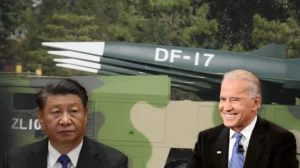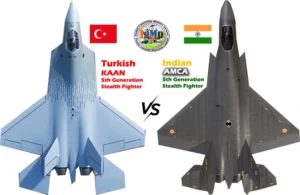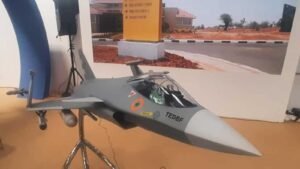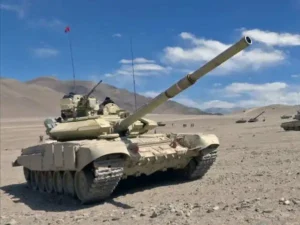The Russian tactic of using “decoy” missiles to bait Ukrainian air defenses to know their location and force it to expend its stockpile has not been significantly successful of late. Ukraine seems to have realized this deception and did not fall for the trick in a large-scale missile attack in and around Kyiv on December 8.
This was noted by the US-based think tank Institute for the Study of War (ISW) about the Kh-55 missile that the Russian Air Force (RuAF) often uses while undertaking long-range standoff missile and drone strikes from aircraft and land.
The missile presumably is launched in coordination with the other munitions to draw Ukrainian surface-to-air missile (SAM) fire, aiming to “disrupt the Ukrainian Air defense by engaging the rocket tracking and interception systems.”

“Nonetheless, this strategy was glaringly unproductive,” ISW said. The report suggests that the missile continues to pose a serious threat, given Ukraine’s limited stocks of Western-supplied “high-precision” air defense missiles.
The EurAsian Times in June had reported this Russian practice of overwhelming Ukraine’s West-supplied air defenses like the Patriot PAC-3, themselves in short supply since it was coming from the US stockpiles and not being manufactured in Ukraine.
This nullified Kyiv’s achievement of increasing the number of shootdowns of Russian missiles since it was also depleting its stock. Ukraine also began receiving other sophisticated European anti-air missile platforms like the Norwegian Advanced Surface to Air Missile (NASAMS), the German IRIS-T, and the French-Italian SAMP/T.
‘Decoy’ Kh-55 Failed This Time
Developed during the Soviet Union in the late 70s and early 80s, Kh-55s were introduced in 1984 as nuclear payload carriers. But during the ‘90s, the Kh-55s were updated and first used in Syria in 2015.
Other reports said that the decoy version of the missile is armed with the warhead of a Kh-555 air-launched cruise missile (ALCM).

Whether this means that Kh-55 stock was modified into two missiles, one with a regular explosive warhead for hitting land targets and the decoy version with a Kh-555 warhead, is unclear.
“Russian forces previously used Kh-55 missiles along with other missile and drone variants as decoys to overwhelm Ukrainian air defenses and compensate for dwindling high-precision missile stockpiles,” ISW said, relying on a Telegram post. In the December 8 missile barrage, Russia used decoy Kh-55 cruise missiles, “which closely resemble the modernized Kh-101 missile,” in a bid to “confuse” Ukrainian air defenses.
Leading Russian military analysis forum Rybar cited the limited number of Tu-160 and Tu-95 strategic bombers for firing the Kh-55 missile, the missile’s incompatibility with other RuAF aircraft, and the Kh-55 being an air-to-ground missile (AGM) only tweaked as an anti-air decoy, without the entire system being designed for the purpose as reasons for the tactics’ failure.
The “old” X-55 cruise missiles with a “warhead simulator” cannot be called a “full-fledged bait,” unlike the American ADM-160 MALD. “These products do not have a special system for simulating and jamming. However, regarding flight parameters and other characteristics, they closely resemble modern X-101s and can mislead the enemy,” Rybar said.
There is also a “limited number of carriers” for the Kh-55, unlike the ADM-160 MALD, which can be fired from “all types of US Air Force strike aircraft.” The Kh-55 can only be carried by the Tu-95 and Tu-160 strategic bombers, and the “number is minimal.”
“Under these conditions, the massive use of decoy missiles by the Russian Aerospace Forces to completely overload the Ukrainian air defense system is virtually impossible,” Rybar added.
What Ukraine Could Have Done To Beat Kh-55
As for the actual technical and tactical conditions leading to the Kh-55 failure this time, two scenarios can be inferred. First, Ukraine generally decided not to react by immediately firing its SAMs at all incoming targets. Second, it had found a way to precisely detect the missile — likely based on a distinct radar signature.
The second possibility could result from more significant technical research into Russian missilery from experience gathered so far. Ukrainian AD crews and their North Atlantic Treaty Organization (NATO) and US technical advisors, unofficially present on the ground, would have identified specific patterns in targets’ trajectories, flight paths, and launch timings to determine which are decoys. This can be achieved by crunching and analyzing months of data on Russian standoff strikes to build a broad picture of Moscow’s tactics and techniques.
Ukraine’s Limited West-Supplied Air Defense Stocks
ISW, however, also noted that the redundant Russian tactic still has no cause for relief as the threat from the missile and Russian standoff strikes is persistent. Quoting Ukrainian military observer Konstantyn Mashovets, it suggested that the situation is exacerbated by “Ukraine’s limited air defenses.” Russia might exploit this ahead of an “anticipated large-scale winter campaign.”
A report in The Economist from October this year quoted Nico Lange, a Ukraine expert at the Munich Security Conference, who said Ukraine has “neither enough platforms nor sufficient munitions for those that it does have.” Kyiv is “entirely dependent on Western systems, having used up nearly all of the mostly Soviet-era S-300 and Buk missiles it was able to get its hands on.”
The deficiency is especially “acute” for short-to-medium range systems, such as the Kongsberg/Raytheon National Advanced Surface-to-Air Missile System (NASAMS). US Secretary of Defense Lloyd Austin “hinted” more NASAMS and the AIM-7 missiles at the time “from existing stocks.”
Lange, however, said that production rates are not increasing quickly enough to meet Ukraine’s needs this winter. European defense firms will increase production but only on existing infrastructure while being “reluctant” to invest in new factories for long-term capacity. Neither is there a “guarantee” that new kits promised to Ukraine would “arrive in a timely way.”
“Take the IRIS-T batteries, two of which have already shown their effectiveness. Germany has promised to send more to Ukraine, but it is not clear when they will arrive,” the report added.








